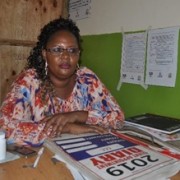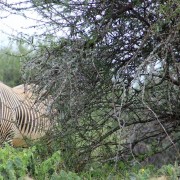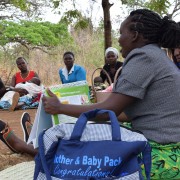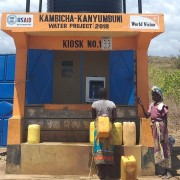Speeches Shim

“I’ve lived with HIV for 18 years and am still going strong,” says Joan. "As a mentor, I can influence behavior change through meaningful messages and encourage more involvement of people living with HIV.” Joan learned of her HIV status in 2002 when a doctor suggested she take an HIV test. She was not responding to medication for flu-like symptoms. “I was devastated when I tested positive and frustrated when there was no one to talk to about my feelings or the way forward with regard to antiretroviral therapy”, she says.

Once found across the scrublands and plains of East Africa, now confined to small pockets of Ethiopia and Kenya, the Grevy’s zebra are fighting for their survival. They are one of Africa’s most endangered large mammals. They are struggling to survive in the face of habitat loss, limited access to water, poaching, conflict with humans, and diseases. In 1970, approximately 15,000 Grevy’s zebras were alive. Today, they are fewer than 3,000. That is an astonishing 75 percent decline in a matter of decades.

A few weeks later, Laticia was invited to join other “lead mothers” and community volunteers from the area at training workshop organized with support from USAID’s Kenya Nutrition and Health Program Plus. At the workshop, Laticia and other participants were taught basic facts about nutrition, including benefits of exclusive breastfeeding and complementary feeding for young children. They also learned about different food groups and how to prepare nutritious meals using affordable local ingredients. Through this training, Laticia and the other “lead mothers” now lead group education sessions using Kenya’s National Maternal, Infant, and Young Child Feeding (MIYCN) Guide, developed with support from USAID’s nutrition program.

In Kenya’s Arid and Semi-Arid Lands, recurrent drought makes access to water—for humans, agriculture, and livestock—an ongoing challenge. Many communities rely on ground water accessed through boreholes or wells, as well as surface water supply structures, such as small dams and water pans. During drought, surface water supplies are not adequately replenished and the pumps that operate boreholes and wells tend to break from overuse and poor management. Repair of pumps can be costly and, particularly in hard-to-reach rural areas, critically delayed. When water is scarce, communities may utilize water unsafe for consumption, face purchasing water at inflated prices at a time when household income is already strained, or walk long distances to reach water, disrupting other critical activities.
Today in Nairobi, U.S. Ambassador Robert F. Godec helped launch East Africa’s agribusiness reality TV show “Don’t Lose the Plot,” which was supported by the U.S. Government’s Feed the Future initiative and the United States Agency of International Development (USAID).

Comment
Make a general inquiry or suggest an improvement.